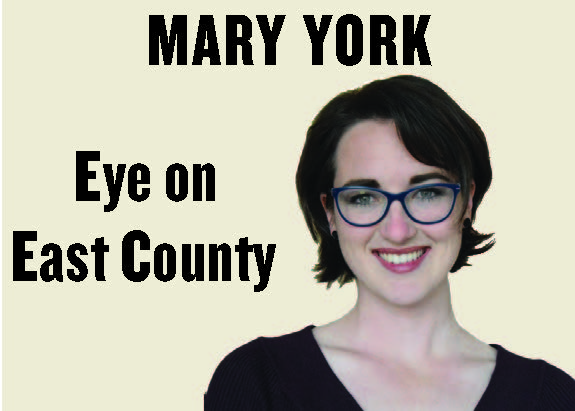Pushing out his chin ever so slightly and furrowing his brows in thought, he asked me, “What was the question, again?”
He is not the first person I have asked, nor will he be the last. I find myself posing this question to more and more people lately, in my attempt to better know and understand the community I am now covering.
“What is the most pressing issue in your community?” I asked him again.
Pushing out his chin ever so slightly and furrowing his brows in thought, he asked me, “What was the question, again?”
He is not the first person I have asked, nor will he be the last. I find myself posing this question to more and more people lately, in my attempt to better know and understand the community I am now covering.
“What is the most pressing issue in your community?” I asked him again.
His grey eyes clouded over momentarily, as if the light behind them had fallen down a deep well of thought. Then he looked at me and said, “Well, homelessness.”
Yes, that is everyone’s first answer.
But I did not let him stop there. See, I want to know what the undercurrent of the neighborhood is. What are the issues that need addressing that maybe we do not think about as often, the ones that get lost behind the more obvious concerns?
My quest for knowledge has turned into an unimaginably insightful journey into the neighborhoods of East County — not just for me, but for those I question as well.
This gentleman, like most I ask, had become suddenly and deeply reflective.
And what an important practice that is, to reflect on our communities and ask ourselves, “How can I make this better?”
Finally, he raised his head and said, “Transit, I suppose.”
He joins many who feel the same way.
East County, especially the far eastern parts, has developed a lot in the last several decades. There was a time when tumbleweed still blew across the highways leading to Santana and El Capitan high schools. Now those areas are developed and fleshed out with people, bustling communities that need better, smoother access to their places of work, school or livelihood, whether that be by car or public transportation.
I made a mental note to keep transit on my list of topics to look into and thanked the gentleman for entertaining my question. On to the next person.
The variety of answers I have gotten has been delightful.
For some, the prominent issues are related to veterans’ health and well-being. For others, it is simply a need for better sidewalks.
Funny, we do not often think about needing sidewalks because so many of us drive everywhere. But the same contingent of people who need better bus routes also need sidewalks to get them to those buses from their homes or jobs.
I have personally walked sidewalks in La Mesa that begin at one crosswalk and end halfway to the next. There I was, stranded on the shoulder of a busy four-lane street, a quarter mile beyond the last pedestrian crossing. If I were a more patient person, I would have hiked that quarter mile back to the crosswalk, but the college student I was half a decade ago decided that efficiency of time required me to run across the street, nearly getting hit by a bus and giving probably everyone on the road that day an unnecessary panic attack. In hindsight, I regret this decision, but I am sure I am not the only stranded pedestrian who has made the same call.
Whoever thought it would be a good idea to end a sidewalk in the middle of nowhere clearly does not use sidewalks often.
Alright, so sidewalks are on the list as well.
Improving libraries and preserving historical landmarks make the conversation with frequency.
Of course, the question of gun safety in schools and immigration policies and enforcement are national issues with very local impacts, joined in coversation by state legislation regarding economics and social issues, the scope of which would take several columns to address appropriately.
Higher education and job opportunities for our youth, community programs and outreach effectiveness – all these merit attention as well.
Someone mentioned that East County does not seem to be accepted as part of the rest of the county yet, despite developments in local downtown areas. This is true on both accounts: East County has certainly developed, and few San Diegans seem to have noticed.
The El Cajon my dad grew up next to used to be completely empty, save its iconic medical building. Now, it has a thriving downtown, with new businesses, great restaurants and a hotbed of artistic haunts. But how do we get the rest of the county to take notice, and what happens when they finally do?
Then, just as my interrogations began to grow repetitive, I found someone with a wholly new perspective to my question.
Spilling out from behind the broad smile of a 30-year resident was the cheerful proposition that, maybe, East County’s most pressing concerns and biggest issues were really positive matters.
East County’s schools are top notch.
Improvements have been made to business sectors.
Areas like El Cajon’s promenade district have brought a vitality to the neighborhood that has long been missing.
So many things – not everything, but many things — are good here.
I have spent the last month and a half trying to get to know this community so I can better write about how to improve it, so I can join in and help fight its battles. This paper has a long history of representing community issues.
But, as a former middle school teacher, I should know well that acknowledging and celebrating successes and achievements can be just as constructive as criticizing faults.
When I lived and worked in Prague several years ago, I taught a class of sixth-grade Czech students in a small primary school. One boy, Krystof, was simply impossible to instruct. He had made up his mind, with the help of exasperated teachers and well-intentioned friends, that he was no good at English and did not want to bother trying to learn it anymore.
Undaunted, I made him participate in our daily boardwork all the same. One day, I asked him to take his turn at the board and he simply stood there. He did not seem to be embarrassed, as some children are when they have to stand in front of a classroom full of their peers. Worse, he seemed apathetic, like he had given up caring at all, like he recognized that he was the punchline of a very sad joke and seemed content to stay there.
So I had him write one letter at a time. It was painstaking work, for both of us. The rest of the class began to take interest, leaning over the desks to watch as he shakily chalked out words in English. Though his movements were slow and the subject was tedious, everyone’s attention was held fast as though suddenly they were watching a NASCAR race and every curve of Krystof’s letters was a bend in the track.
Several students tried to correct his mistakes as he went, but I hushed them. Today, this boy needed to know that he could do it. And in mastering this little feat, he would be accomplishing something much greater.
When he finally finished, applause and praised overwhelmed the sound of the lunch bell. For the first time all year, I saw him smile.
He was a different student in my class from that day on, and when I bumped into him a year or two later, after he had moved on from my class and into someone else’s, his English was very good.
I think, perhaps, my approach to acquainting myself with this community has been one-sided. The question I pose begs for a problem to solve, an issue, a concern. But there is so much that East County has to offer and so much to talk about, to celebrate and praise, that to limit myself only to areas where there is a need for growth would be to misunderstand the community entirely. It would stunt my own growth as a new member here.
I promise to still ask ‘tough questions’ — that is my job, after all. But, as I said I would in my very first column in The Californian, I also promise to get to know this community as best I can, which means asking about the pride of your neighborhoods and the developments you are excited to share.
I am sure there will be a lot to talk about.













